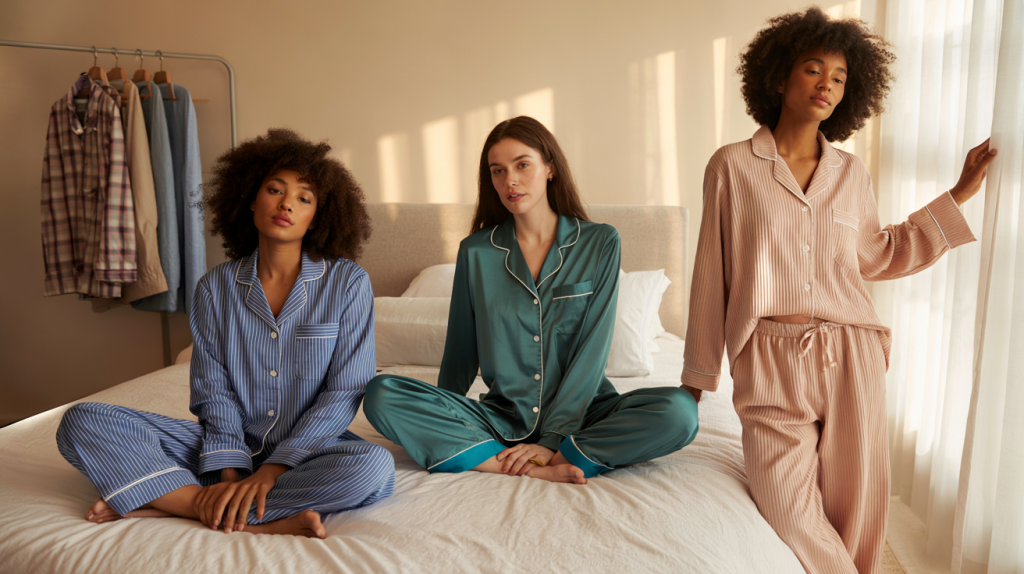Best women’s pajama brands ranked by comfort, fabric and sustainability, with real stats and a smart shortlist that makes shopping painless.
Shopping for women’s pajamas can be oddly complicated. Comfort rules, yet style and price matter, and the right fabric changes everything. The top players today mix cloud soft knits, breathable cotton, and washable silk, from wallet friendly sets to luxury nightwear that still goes in the machine.
Here is the fast track. Think timeless cotton from Lake Pajamas or Desmond and Dempsey, silky modern sets from Lunya or Olivia von Halle, cozy modal from Eberjey, inclusive fits and trend colors from Skims, and strong value from Uniqlo, H and M, Marks and Spencer, and Gap. For low impact choices, Pact, People Tree and Coyuchi focus on certified materials. The goal is simple, better sleep and better feel, without guesswork.
Best women’s pajama brands, by feel and budget
Every body sleeps differently, which is why the best brand is the one whose fabric and fit match the way someone runs hot or cool at night. Price also stretches wildly. Silk can sit at three figures, while cotton jersey stays friendly. The picks below reflect what shoppers reach for most often when comfort drives the cart.
One quick reminder from the National Sleep Foundation : adults generally need 7 to 9 hours of sleep, and a bedroom set between 60 and 67°F, 15 to 19°C, helps the body fall and stay asleep. Pajamas that breathe and move with the skin support that window.
Here is a curated list that keeps it simple.
- Eberjey, modal and jersey, soft stretch sets that drape, about 98 to 178 dollars
- Lunya, washable silk tops and pants, elevated yet practical, about 178 to 298 dollars
- Lake Pajamas, Peruvian pima cotton, crisp stripes or solids, about 84 to 138 dollars
- Desmond and Dempsey, cotton poplin with hand painted prints, about 100 to 180 dollars
- Olivia von Halle, luxury silk with a fluid cut, about 400 to 600 dollars
- Skims, inclusive sizing, rib knits and soft lounge sets, many under 120 dollars
- Uniqlo, AIRism and cotton, cool touch in summer, about 29 to 59 dollars
- H and M, affordable cotton and satin looks, frequent new drops, many under 40 dollars
- Marks and Spencer, classic cotton blends, dependable sizing, about 25 to 55 pounds
- Pact, organic cotton jersey basics, GOTS certified, about 40 to 80 dollars
- Coyuchi, organic cotton flannel and gauze, relaxed West Coast feel, about 98 to 198 dollars
- People Tree, Fair Trade organic cotton, simple silhouettes, about 60 to 110 dollars
Fabrics that matter : cotton, modal, silk, Tencel, and how they feel
Cotton works for most sleepers. Pima or long staple versions, used by Lake Pajamas, feel cooler and pill less. Poplin reads crisp and structured, jersey feels stretchy and mellow. Modal and micro modal, a man made cellulosic fiber, deliver that slinky hand Eberjey is known for.
Lyocell branded as Tencel uses a closed loop system that recovers and reuses more than 99 percent of the solvent, 99.8 percent according to Lenzing. That lowers impact while giving a cool, smooth touch that many hot sleepers love in summer.
Silk is light and thermoregulating, which explains the washable silk wave led by Lunya. Not all silk is equal. Momme weight hints at density, mid teens to low twenties is common for sleep sets, higher feels richer. Satin polyester can mimic shine, it traps heat more, it costs less.
Sizing, fit and care : common mistakes and easy fixes
Most returns happen because of fit surprise. Roomy cuts relax muscles and joints, tight waistbands wake people at 3 a.m. when circulation feels off. Choose a top that skims, not clings, and bottoms with a drawcord or soft elastic. Tall frames often prefer a 30 to 32 inch inseam in full length pants, petites stay happier around 27 to 29 inches.
Wash care changes lifespan. Cold water, low spin, and delicates bags keep knits from twisting. For silk, the washable sets truly can go gentle cycle, then air dry flat. Fabric softener coats fibers and can reduce breathability, especially on cotton and Tencel. A quick steam restores drape without flattening fibers like a hot iron.
If night sweats are a thing, pair breathable pajamas with that cooler room target from the National Sleep Foundation. Natural fibers and moisture wicking cellulosics reduce clammy wake ups. One more tip, try a short sleeve top with long pants or a tank with a light robe, modular dressing adapts to midnight temperature swings.
Sustainability claims, certifications and the real numbers
Labels can read dense. A few markers actually help. GOTS on cotton covers organic standards from field to finished garment. OEKO TEX Standard 100 means every component, thread to button, is tested against a list of regulated and non regulated substances.
Numbers bring clarity. Organic cotton still represents a small slice of the market, 1.4 percent of global production in the 2020 to 2021 season, Textile Exchange 2022 Organic Cotton Market Report. Yet that same body cites a life cycle assessment showing organic cotton uses 91 percent less blue water and has 46 percent lower global warming potential versus conventional cotton, Textile Exchange 2016.
On the brand side, inclusivity and demand are rising together. Skims, launched in 2019 with extensive size ranges, reached a 4 billion dollar valuation in 2023, widely reported by The Wall Street Journal in July 2023. That momentum pushed many rivals to expand sizing and fabric choices in sleep and lounge, which means better options on the rack today.
Final check before buying : match fabric to body temperature, pick a cut that invites deep breathing, scan for credible certifications when sustainability matters, and compare the cost per wear. The right set does not just look pretty, it definitly helps the brain switch off faster.
